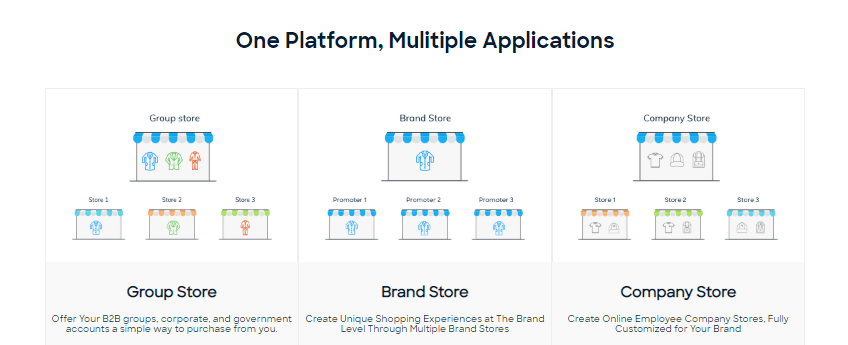
|
By Jackie Rosselli |
|
I How do companies in the uniform marketplace go about the business of finding new customers? Are there tried and sure-fire ways to land accounts? What are some of the newer tactics, and which are most effective? Made to Measure talked with a number of store owners to find out what works best. Here’s some of what we discovered: Making the Old New Again: Tapping Former Customers “Former customers become new prospects. They go into our system and are called upon again,” says Jerry Martin, vice president of sales and marketing for Prudential Overall Supply, a uniform provider with solutions for businesses requiring uniforms and textile rental programs. Organizations with which you’ve previously done business are a treasure trove of opportunity. Best of all, they can be converted into current customers the old-fashioned way by contacting them. Consider the following real-world example from Blumenthal’s, a Washington state retailer specializing in the public safety market. “Last year, we called on a state agency we had serviced for a couple of years after their previous supplier had closed. We lost their business when they put it out to bid and a competitor’s proposal was lower than ours. That was five years ago,” says Blumenthal’s Roger Heldman. “Late in 2009, we decided to call on them to see if we could re-establish the contract. They told us they were pleased with how we had serviced them when we were their supplier but hadn’t thought of doing business with us again because a competitor had told them they were ‘too small’ for Blumenthal’s. Further, they thought we weren’t interested in doing business with them, which is understandable since we never contacted them after we lost the bid.” So Blumenthal’s worked to win back the account. Following the initial meeting, it presented products that the agency had specified in their new bid. The tactic worked; Blumenthal’s was awarded a five-year contract beginning in January 2011.”It’s important to keep the lines of communication open and let former customers know that their business is desired,” reminds Heldman. “Keep them informed of new products, services and industry developments. Had we done this sooner, we’d likely have been enjoying their business the last few years.” For Heldman as well as the Blumenthal sales team, the encounter was a teachable moment. “The department truly believed we weren’t interested in their business, and our lack of contact confirmed this,” he says. “I’m embarrassed we allowed them to feel unwanted.” Clearly, it’s a good practice to call on lost customers and attempt to renew old relationships. The knowledge of their needs and history of service with them can make it an easier sale than developing a relationship with a brand new customer. Lost customers are good prospects. Often, they find the grass isn’t greener with another supplier and are delighted to again do business with a familiar retailer. Freebies, Promotions and Discounts The incentives don’t have to break the bank either. Medical apparel retailer Melanie Imlay has developed a number of low-cost marketing strategies that have worked well throughout the years. “I designed and printed a VIP card that all employees carry in their wallets,” says the owner of Ohio-based Imlay’s. “If they’re in a hospital or restaurant or out in any public place and they come across someone dressed in a lab coat or scrubs, they’ll hand them the card, which includes a 20 percent discount on a purchase at my store.” Imlay says the tactic has boosted walk-ins and has generated new business. And what of those who come in and don’t make a purchase? They’re handed a “Thanks for Looking” card, entitling them to $5 off a future order. “People like to feel they’re getting a little something extra,” notes Imlay. She’s even gained new customers by paying the bill for a table of nurses eating breakfast at a diner. “Breakfast doesn’t cost that much,” Imlay says. Imlay advises medical apparel retailers to stay connected to their community. “You’ll find a number of prospects by doing charitable work or becoming involved in other community activities,” she says. Imlay herself is on the board of the local Red Cross and is active in area hospitals. Her established customers aren’t neglected either. She sends her best customers a $10 gift certificate during the holiday season to entice them into additional purchases. “You have to try everything, do everything you can in this business,” Imlay adds. On the Road Again “It’s a captive audience,” says Greg Arndt, who owns and operates O’s Uniforms, a mobile uniform sales retailer based in Ohio. “It’s convenient for them and a great way to find new customers.” Arndt doesn’t have to pack up; he doesn’t own a brick and mortar. But don’t be fooled; his two oversized trailers house enough inventory to rival that of any traditional retailer. On the road, he typically spends two to three days at each area hospital talking to customers and prospects, at times working from 6:30 a.m. to midnight. “But if I’m visiting a nursing home, I can reach 80 percent of the staff within two hours,” says Arndt. Like Imlay, Arndt notes the importance of establishing contacts within the medical community. “Working fundraisers, for example, is a great way to build relationships with hospitals,” he adds. E-Commerce and Email Marketing A growing number of retailers are establishing an online presence, using both public and private stores to capture a greater share of the marketplace. Arndt, who’s looking to expand beyond Ohio, sees his new e-commerce website as a vehicle to do this. “Having the ability to sell online certainly opens up new opportunities,” he says. “And private stores will help me keep, and hopefully generate increased, business from my best customers.” Used properly, email marketing is one of the most cost-effective tools to communicate with both customers and prospects. Sending a marketing letter via email requires less paper and staff hours than sending the same communication via traditional mail. And while letters are often thrown in the trash, there’s a good chance that an email will be forwarded to those outside the original recipient list. Don’t forget, too, the ability to track such movement, meaning you’ll gain valuable insight into the likes and dislikes of both customers and prospects. Prudential Overall Supply uses a mix of online marketing approaches to reach its various audiences. It has an e-commerce site for the direct-sale side of the business and an online magazine intended to strengthen customer relationships.As for email marketing, the company regularly sends news of its green initiatives, providing useful product information to customers and potential accounts. It also segments its lists, offering industry information specific to business type. Stealing a Competitor’s Ideas “I look at what they’re doing on their website or in their advertising or other promotional materials,” says the store owner, who prefers to remain anonymous. “This is not to say that what they’re doing is better or worse than what I do. But sometimes, change is beneficial.” For this particular retailer, the strategy resulted in several new customers. The moral? Paying close attention to your competitors’ tactics can help you improve your own. Making one or two minor changes to your website or product descriptions may be the prompt that leads to new customers and bolstered revenue. Social Media is About Relationships, Not Pitches “We’re in the midst of finding out how we can use that to help our customers, and we’re putting together a package for 2011,” says Prudential’s Jerry Martin. The company does, however, run informational videos on YouTube and has a presence on the business social networking site LinkedIn. Social media was made for the uniform industry. Its emphasis is on engagement and relationships. Few other industries rely on these traits for their existence as much as the uniform industry. Social media, too, is the great equalizer. Its conversational nature gives businesses of all sizes the ability to be intimate. Ideally, social media helps any business become the mom-and-pop store where everyone knows your name and preferences. Best of all, it’s free advertising. Your Facebook page can run specials or get the word out about events, or you can tweet to gauge interest about a new product on Twitter. Customers mainly interact with retailers on social media sites to learn about products and promotions a marketer’s dream come true. With more than 500 million users, Facebook is, by far, the best place to reach shoppers, both because it’s where they already are and it’s where they want to hear from retailers. The Last Word: Know Your Territory and Work It So what’s the single most effective tactic? That depends to whom you’re talking. But there’s one constant no matter the market or retailer: target your territory and hit the streets. “We’re in a hyper-competitive environment where every single account is critical to obtain,” says Martin. “It’s important to get out there and see clients on a more frequent basis.” |
| Above story first appeared in MADE TO MEASURE Magazine, Spring & Summer 2011 issue. All rights reserved. Photos appear by special permission. |
| UniformMarket, LLC 633 Skokie Rd., Suite 490 Northbrook, IL 60062 T: 224-406-8840 F: 224-406-8850 E: [email protected] |




 t’s simple a business cannot survive without attracting new customers. No matter how well run, businesses loose customers each year, and this is true in both good times and bad. Not only must these customers be replaced, but additional new customers must be found in order to assure business stability and growth.
t’s simple a business cannot survive without attracting new customers. No matter how well run, businesses loose customers each year, and this is true in both good times and bad. Not only must these customers be replaced, but additional new customers must be found in order to assure business stability and growth.







